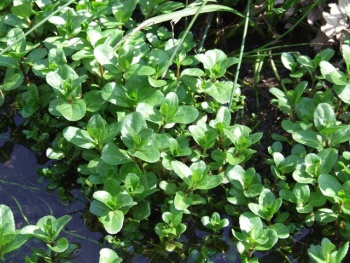Brooklime
From Wikiwel
Other Names: Becabunga, Beccabunga, Cresson de Cheval, Cresson de Chien, Mouth-Smart, Neckweed, Salade de Chouette, Speedwell, Veronica beccabunga, Véronique Beccabunga, Véronique des Ruisseaux, Water Pimpernel, Water Purslane.
Special Precautions of Brooklime
- Don’t confuse brooklime with Black Root (Leptandra virginica) or Veronica (Veronica officinalis). All three plants are sometimes called “speedwell.”
- do not confuse with Purslane
- Lithium interacts with Brooklime.
Benefits and uses of Brooklime are
Although the medicinal value of the brooklime plant is not very significant, the whole plant is useful for restoring normal health.
- protects against scurvy
- reduces high fever
- emmenagouge
- slightly diuretic increasing the outflow of urine.
- In addition, when the plant is added to meals, it functions as a purgative.
- Scurvy and Skin disease : Herbalists often prescribe the herb to heal scurvy (a disease caused by shortage of vitamin C) and also to cleanse the blood. Moreover, the herb is pounded and made into a poultice to apply externally to heal sores, burns, whitlows (infectivity of the toe and fingers) and other similar problems. Although the brooklime plant's ability to stop bleeding is not significant, in earlier times, herbal medical practitioners used the herb to heal open wounds. The juice extracted from the brooklime plant, along with the sap from Seville oranges and scurvy-grass, were once known as the ‘spring juice'. This ‘spring juice' was held in high esteem in earlier times for their ability to cure scurvy. It may be mentioned here that the brooklime plant has always been a favorite herb for healing scrofulous or diseased conditions, particularly of the skin.
